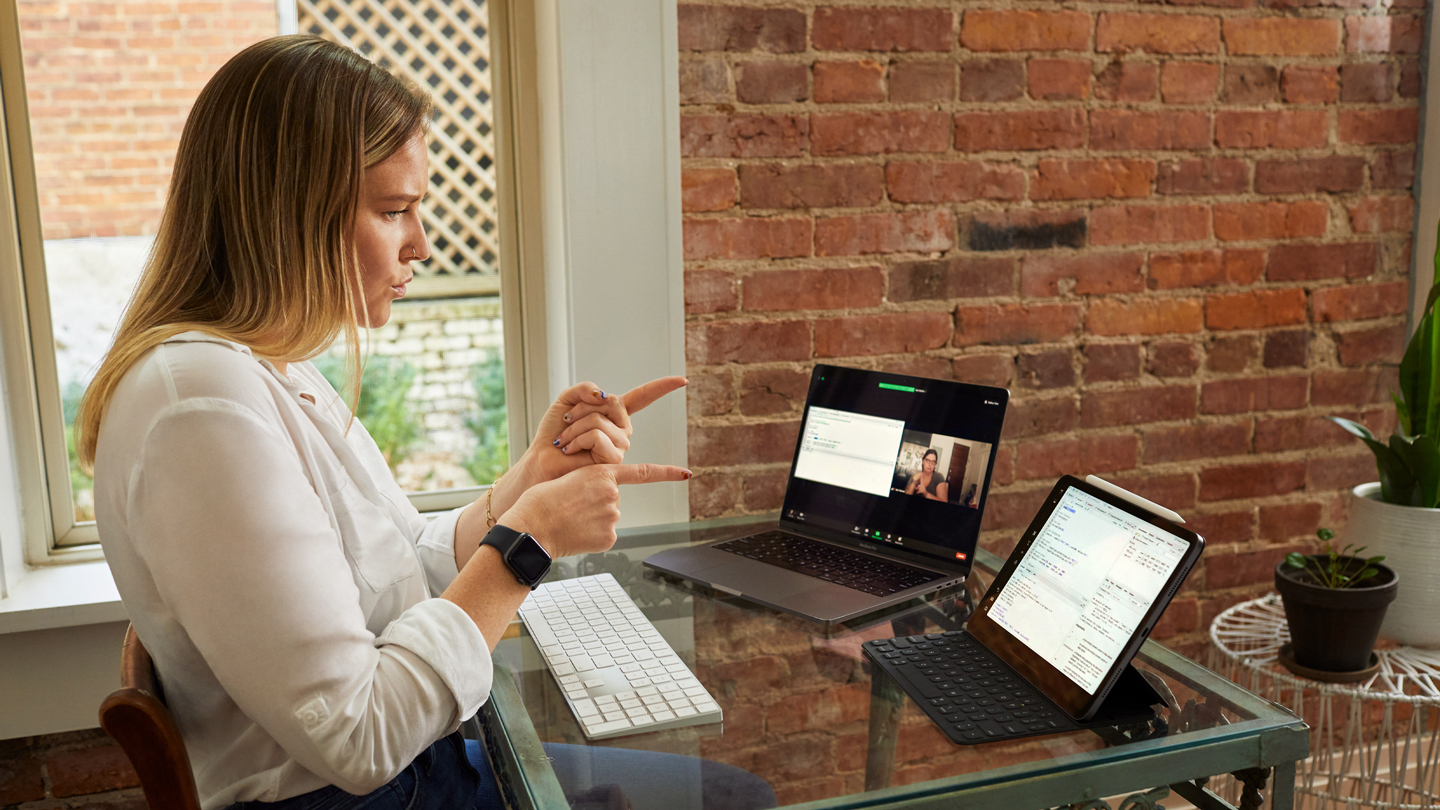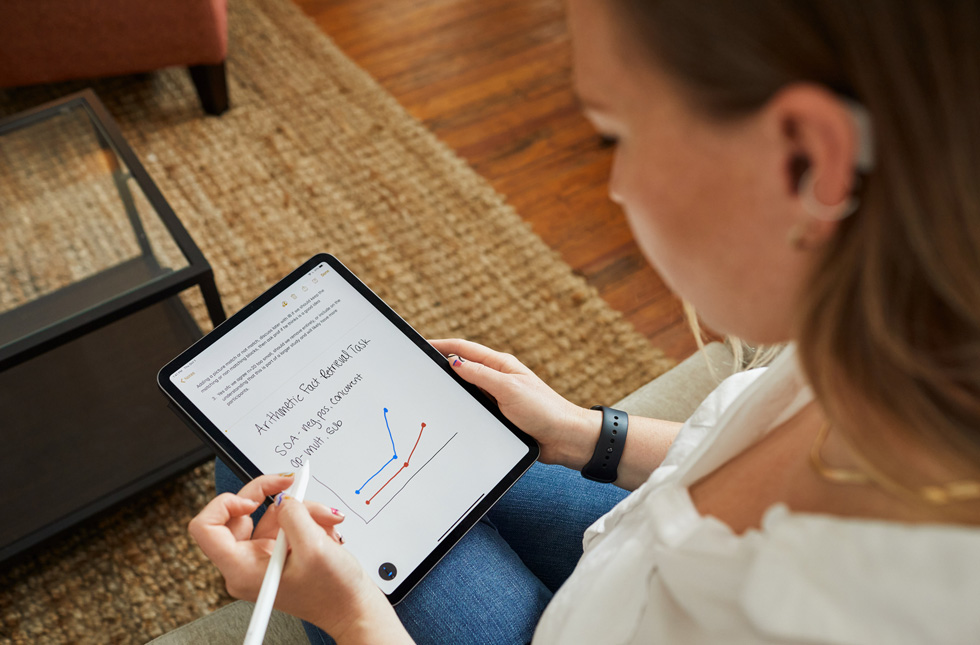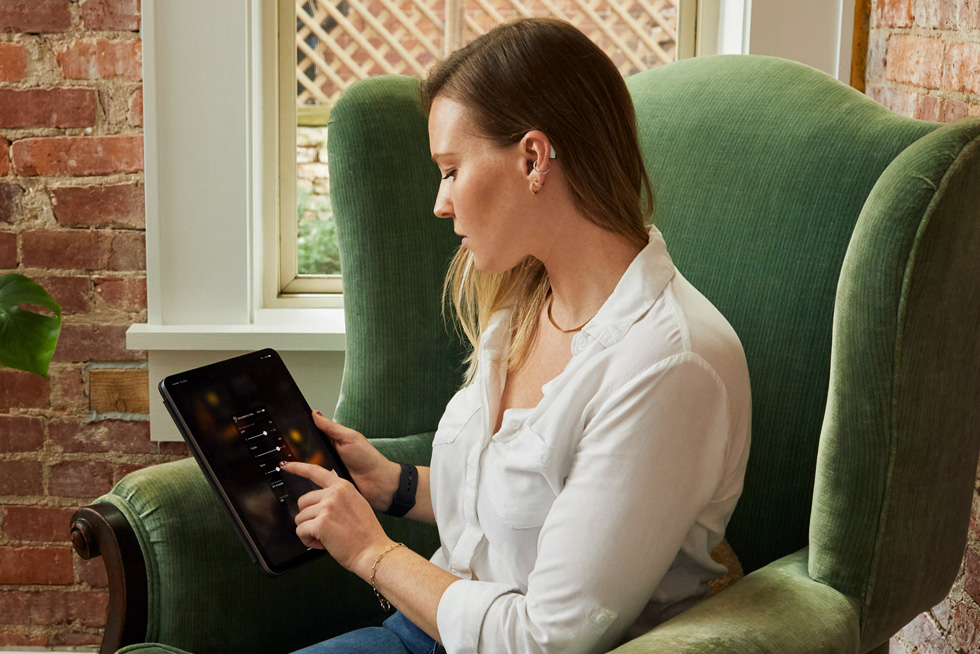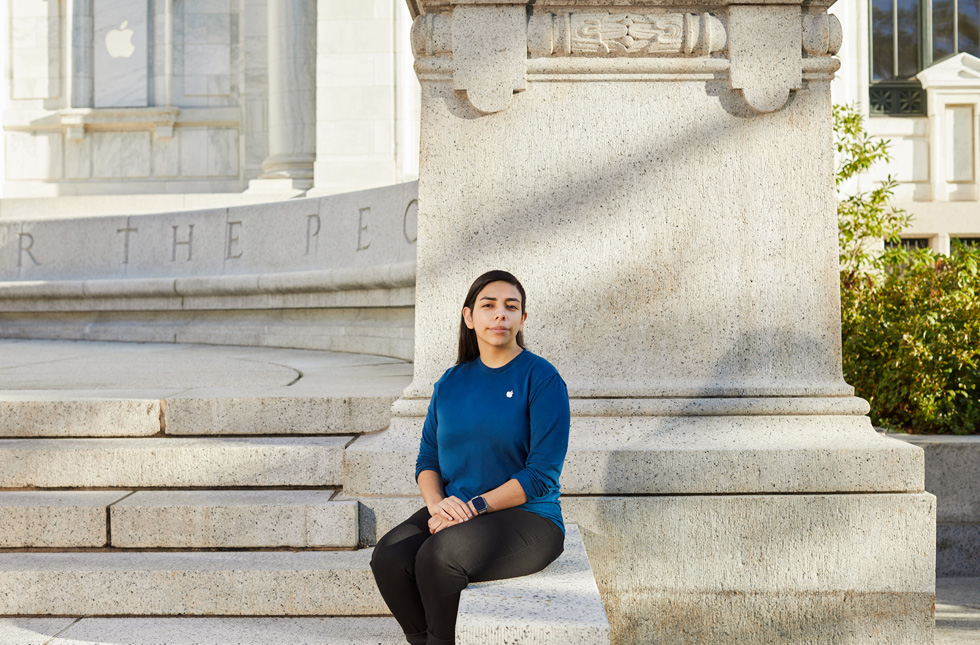FEATURE
08 October 2020
Apple and Gallaudet University foster innovation in education
This summer, Gallaudet University students and faculty received a special welcome kit. Inside, they found some essential Bison gear — the school’s mascot — including stickers, a notebook, and a few powerful learning tools that would be essential for the remote fall semester. Every student and faculty member was equipped with a new iPad Pro, Apple Pencil, and Smart Keyboard Folio.
With iPad Pro, Gallaudet marks the next chapter in its mission to offer students the knowledge and practical skills vital to achieving personal and professional success. It’s also a core component of Connected Gallaudet, an initiative that consists of three imperatives in the university’s strategic plan: equity and belonging, bilingual mission, and innovation.
“We are grateful to Apple for entering into this exciting collaboration with us, and for its support in so many other ways,” says Roberta J. Cordano, president of Gallaudet University. “While Connected Gallaudet was in the works even before the novel coronavirus pandemic, it has become transformational for us as we moved entirely online for the fall semester.”
Gallaudet University has always been a centre of advanced learning and teaching approaches. From its founding in 1864 with 8 students who are deaf, to its thriving university community of over two thousand students and faculty today, Gallaudet has become the premier higher education institution for the Deaf and Hard of Hearing community. As many schools around the world face the challenges of remote learning with online classes, Gallaudet rises as an example for what educators and students can do with their creativity powered by personal technology.
SaraBeth Sullivan, a fourth year Ph.D. student in the university’s Educational Neuroscience program, finds the flexibility of iPad Pro extremely helpful. With iCloud she can synchronise files across her devices, and she takes full advantage of Sidecar, making use of an extra screen during online class presentations. These features help remote learning experiences stay personal.
“In my advanced statistics class using R to analyse data, I was struggling with a piece of code that was giving me repeated errors,” Sullivan says. “I was able to share my screen with my professor over Zoom and hand over controls to her. She was able to work on my iPad, working on my code, solving the issue! Without my iPad, this would have been more difficult.”
iPad Pro is also designed with intuitive accessibility features built in, including Live Listen for fine-tuning AirPods and hearing aids, as well as closed captioning for reading dialogue and displaying music and sound effects while watching movies and TV shows. The App Store on iPad and iPhone also features dual language apps.
“I can connect my hearing aid to my iPad using Bluetooth,” Sullivan says. “And for students, I recommend VL2 Storybook apps that support learning in both American Sign Language and English.”
Gallaudet’s use of technology is an important part of all of its academic programs and services. Nearly all courses at Gallaudet have an online component, and students take at least one course with an online learning system. This level of technological integration is higher than average for universities nationwide, with courses at Gallaudet making extensive use of visual applications and video. Gallaudet students and faculty were well-prepared for today’s challenges, harnessing the latest features and capabilities into their work.
Dr. Julie A. Hochgesang, Ph.D. and associate professor in the Department of Linguistics, teaches the field methods and phonology of signed languages, and researches language documentation and corpus linguistics. This means she is constantly observing, assessing, and researching how people use language. Dr. Hochgesang finds technology essential, often using Markup to make notes on raw data, AirDrop to share files, AirPlay for presentations, and Sidecar. When COVID-19 hit, many people who are deaf around the world were talking about the crisis. They were also figuring out how to talk about it.
“There were words and signs we were using for concepts most of us had never seen before,” says Dr. Hochgesang. “I saw many videos and online written posts, and saw the different signs people were using. I was able to screen-record or take a screenshot of these examples and immediately mark them up and insert them in my Notes app or transfer them to my iMovie app to compile them.”
The iPad Pro is also helpful in ensuring Dr. Hochgesang engages well with her linguistics students in remote classes by maximising the sizes of their individual online screens on her screen. Visual contact is crucial.
“With my iPad Pro, I am able to connect to my computer and run my shared screen,” says Dr. Hochgesang. “I use Keynote for all of my presentations, allowing me to view the presentation on my iPad Pro, and make all the emboxed screens even bigger allowing me to see all of my students.”
Apple is also giving students opportunities in technology after they graduate from Gallaudet. Apple Carnegie Library, in Washington, D.C., holds several recruiting efforts with Gallaudet, and currently employs more than 30 team members of the Deaf and Hard of Hearing community. Many are Gallaudet alumni.
Jasmin Leon, a People Operations Planner at Apple Carnegie Library, and a 2019 Gallaudet alum, supports hiring efforts and has seen the innovation Gallaudet alumni have inspired across the team.
“We have established an open-mindedness and willingness to try different approaches that fit our customer the best,” says Leon. “With the trust and strong collaborative relationship among us, we were able to create the best experience for all of us. It might be using iPad to communicate with a deaf customer. It can be launching the Big app on iPhone, but it’s definitely teamwork with teammates who are deaf. We are constantly finding new ways to communicate with the Deaf community.”
Asked about her experience and preparation during her time at Gallaudet, Leon again mentions the University’s tradition of pushing learning experiences forward.
“When I attended my social work classes, we would focus on the importance of technology and how it influences our youths, especially their early childhood education,” Leon says. “We analysed and discovered the results of early exposure to coding, reading, and how graphic design sparked their creativity and curiosity of learning. If I have to describe Gallaudet University in one sentence, it has to be innovation in technology.”
This fall, Apple and Gallaudet have also collaborated on the inauguration of scholarships for students of colour with disabilities who are pursuing degrees and coursework in information technology, computer science, and other science, technology, and mathematics fields. The new scholarships will also give students the opportunity to participate in Apple’s Worldwide Developers Conference.
“It’s an honour to work with such an innovative institution as Gallaudet,” says Susan Prescott, Apple’s vice president of Markets, Apps, and Services. “It’s great to see technology have this kind of impact across an entire university while also bringing coding together with American Sign Language and creativity. It’s so exciting that Gallaudet students will participate in WWDC next year.”
Share article
Images of Gallaudet University Students




